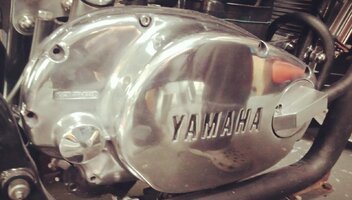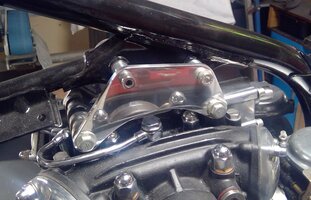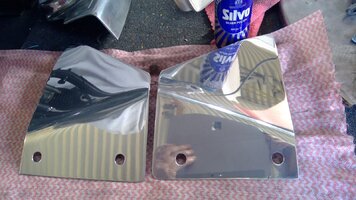As you all probably know I polish a lot of aluminium, along with that comes a lot of experimentation with different mediums: Mops, compounds, polishes, etc.
There are many types or grades of aluminium: 1000 series through to the 7000 series, 1000 being the most pure and therefore the softest and most malleable. 3000 and 6000 series being the most common, particularly 6061. Which I mainly use.
The different grades have all sorts of additions to improve their usefulness: Manganese, silicon, magnesium, copper, zinc, you name it. Cast aluminium, as in engine casings is pretty much a mixed bag, having all sorts of additions, mostly just through careless casting. Some aluminiums can me hardened, such as 6061. Some can’t. Annealing aluminium makes it softer and therefore more malleable and easier to work with, but be careful as hardening aluminium is not a back yard process. Some will self harden over time, but that takes a lot of time. I have some annealed 6061 that I annealed over two years ago, I’m still waiting for it to harden.
They can all be polished, some better than others, some retain their shine, some, such as Duralium, oxidise very quickly due to the copper content. Duralium was once a favoured material for pistons with the Brit bike manufacturers. Marine grade aluminium, 5000 series, is probably the least affected by oxidising, but it still does oxidise. All grades oxidise, the rate depending on environment: A polished piece of 6061 will retain its shine for a relatively long time if kept in a clean environment not subject to the vagaries of weather and road conditions. Out in the open, dealing with water, sun, mud, road debris, rain, salt, etc, will see it oxidise very quickly.
So to polishing. For mops we have stitched sisal, used for the heavy work. In conjunction with black compound will speed up the polishing process, just be careful of creating dips and gouges.
Next is sewn cloth wheels, generally made of calico and generally used with white or brown compound. Used to apply a little shine and smooth over the surface after sisal and black compound,
Then there are loose leaf cloth wheels, again generally calico and used with green compound for a final polish, although these wheels also work well with white and brown compound. When changing compounds, I’ve never found it necessary to remove say white compound before applying green, however, you may need to clean if the mop is impregnated with the ally substrate, wire brushes do a pretty good job.
But that’s not the end of it, there is another loose leaf wheel. Called Swansdown. Swansdown is quite a bit softer than calico loose leaf wheels and generally used with green compound, but as with calico loose leaf wheels will work quite well with white or brown compound. A wire brush will keep it soft and clear of clogging. Swansdown is not common, you will have do a search specifically for Swansdown wheels.
Regardless of how much you polish, you will be left with grainy streaks from the direction in which the mop polishes the surface. Hard to see, but there just the same if you look very closely. For the purist, these streaks can be lessened by polishing the material in one direction, then in another at 90 degrees, giving a cross hatch pattern, but making the streaking of scratching less noticeable. Finishing off using a cross hatch light touch will again reduce the streaking, but it is still there if you look close enough – very annoying.
Don’t spare the compound, the compound is what does the work, the mop is simply there to hold the compound. Let the compound thin out enough and all you’ll get is heat. You will also be left with very small blobs of compound on the surface, particularly with green compound, mostly around holes and edges. If you try to remove it afterwards with a cloth and hand polish it will scratch the surface. So to finish off, make sure the mop is well compounded.
Aluminium is very soft, so even polishing by hand with a microfibre cloth will scratch it. Again, very hard to see, but if you look close enough! So, when polishing with a microfibre cloth and say Silvo, which I find the best, do not use a circular motion, rub the polish on in line with the streaks, or scratches left by the mops and compound. It will be much less noticeable.
Cast ally is rubbish, whilst it generally polishes very, very well and doesn’t scratch easy, you will see pinholes and some stains from impurities during the casting process. Best aluminium to use is marine grade ally and 6061. 6061 because only the 7000 series is harder and marine grade (5000 series) due to its higher resistance to oxidising.
Polished aluminium will never be as sharp or gleam as will chrome or stainless, it is a more ‘subdued’ finish, and in my opinion – nicer!
Here’s some pictures of some final polishing I did on some side panels, engine mounts and filter mount. The side panels had been clear coated but as the polishing wasn’t to my liking, I stripped the clear off and repolished. These are about as good as you’ll get, but you can see the hairs on my fingers in the third shot in. You can also see the scratching/streaking and cross hatching if you look close enough.
Maintenance: I’ve found microfibre cloth and Silvo the best, other polishes such as Meguires and Autosol have a coarser texture and tend to leave deeper scratches. There are clear coats specifically for coating polished aluminium, Glisten and a few others. I’ve opted to use just 2k because my bike will never see the road whilst I have it, and interestingly when I did remove the clear coat I used on the first go, the clear on the inner blasted surface came straight off after soaking in lacquer thinner. Not so the polished side, I had to scrub and scrub and scrub to get it off.
Now these are my observations made from over 50 years of polishing, you may disagree so take this post with a grain of salt, I’ll stick to my way of doing it.
There are many types or grades of aluminium: 1000 series through to the 7000 series, 1000 being the most pure and therefore the softest and most malleable. 3000 and 6000 series being the most common, particularly 6061. Which I mainly use.
The different grades have all sorts of additions to improve their usefulness: Manganese, silicon, magnesium, copper, zinc, you name it. Cast aluminium, as in engine casings is pretty much a mixed bag, having all sorts of additions, mostly just through careless casting. Some aluminiums can me hardened, such as 6061. Some can’t. Annealing aluminium makes it softer and therefore more malleable and easier to work with, but be careful as hardening aluminium is not a back yard process. Some will self harden over time, but that takes a lot of time. I have some annealed 6061 that I annealed over two years ago, I’m still waiting for it to harden.
They can all be polished, some better than others, some retain their shine, some, such as Duralium, oxidise very quickly due to the copper content. Duralium was once a favoured material for pistons with the Brit bike manufacturers. Marine grade aluminium, 5000 series, is probably the least affected by oxidising, but it still does oxidise. All grades oxidise, the rate depending on environment: A polished piece of 6061 will retain its shine for a relatively long time if kept in a clean environment not subject to the vagaries of weather and road conditions. Out in the open, dealing with water, sun, mud, road debris, rain, salt, etc, will see it oxidise very quickly.
So to polishing. For mops we have stitched sisal, used for the heavy work. In conjunction with black compound will speed up the polishing process, just be careful of creating dips and gouges.
Next is sewn cloth wheels, generally made of calico and generally used with white or brown compound. Used to apply a little shine and smooth over the surface after sisal and black compound,
Then there are loose leaf cloth wheels, again generally calico and used with green compound for a final polish, although these wheels also work well with white and brown compound. When changing compounds, I’ve never found it necessary to remove say white compound before applying green, however, you may need to clean if the mop is impregnated with the ally substrate, wire brushes do a pretty good job.
But that’s not the end of it, there is another loose leaf wheel. Called Swansdown. Swansdown is quite a bit softer than calico loose leaf wheels and generally used with green compound, but as with calico loose leaf wheels will work quite well with white or brown compound. A wire brush will keep it soft and clear of clogging. Swansdown is not common, you will have do a search specifically for Swansdown wheels.
Regardless of how much you polish, you will be left with grainy streaks from the direction in which the mop polishes the surface. Hard to see, but there just the same if you look very closely. For the purist, these streaks can be lessened by polishing the material in one direction, then in another at 90 degrees, giving a cross hatch pattern, but making the streaking of scratching less noticeable. Finishing off using a cross hatch light touch will again reduce the streaking, but it is still there if you look close enough – very annoying.
Don’t spare the compound, the compound is what does the work, the mop is simply there to hold the compound. Let the compound thin out enough and all you’ll get is heat. You will also be left with very small blobs of compound on the surface, particularly with green compound, mostly around holes and edges. If you try to remove it afterwards with a cloth and hand polish it will scratch the surface. So to finish off, make sure the mop is well compounded.
Aluminium is very soft, so even polishing by hand with a microfibre cloth will scratch it. Again, very hard to see, but if you look close enough! So, when polishing with a microfibre cloth and say Silvo, which I find the best, do not use a circular motion, rub the polish on in line with the streaks, or scratches left by the mops and compound. It will be much less noticeable.
Cast ally is rubbish, whilst it generally polishes very, very well and doesn’t scratch easy, you will see pinholes and some stains from impurities during the casting process. Best aluminium to use is marine grade ally and 6061. 6061 because only the 7000 series is harder and marine grade (5000 series) due to its higher resistance to oxidising.
Polished aluminium will never be as sharp or gleam as will chrome or stainless, it is a more ‘subdued’ finish, and in my opinion – nicer!
Here’s some pictures of some final polishing I did on some side panels, engine mounts and filter mount. The side panels had been clear coated but as the polishing wasn’t to my liking, I stripped the clear off and repolished. These are about as good as you’ll get, but you can see the hairs on my fingers in the third shot in. You can also see the scratching/streaking and cross hatching if you look close enough.
Maintenance: I’ve found microfibre cloth and Silvo the best, other polishes such as Meguires and Autosol have a coarser texture and tend to leave deeper scratches. There are clear coats specifically for coating polished aluminium, Glisten and a few others. I’ve opted to use just 2k because my bike will never see the road whilst I have it, and interestingly when I did remove the clear coat I used on the first go, the clear on the inner blasted surface came straight off after soaking in lacquer thinner. Not so the polished side, I had to scrub and scrub and scrub to get it off.
Now these are my observations made from over 50 years of polishing, you may disagree so take this post with a grain of salt, I’ll stick to my way of doing it.
Attachments
-
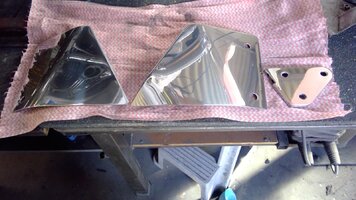 WIN_20220823_14_33_28_Pro.jpg295 KB · Views: 153
WIN_20220823_14_33_28_Pro.jpg295 KB · Views: 153 -
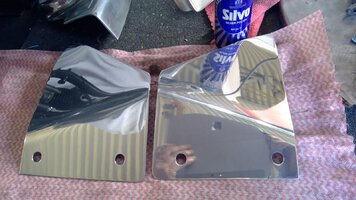 WIN_20220823_14_37_09_Pro.jpg284.2 KB · Views: 153
WIN_20220823_14_37_09_Pro.jpg284.2 KB · Views: 153 -
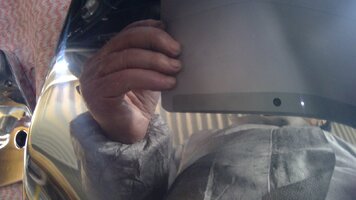 WIN_20220823_14_38_31_Pro.jpg141.9 KB · Views: 144
WIN_20220823_14_38_31_Pro.jpg141.9 KB · Views: 144 -
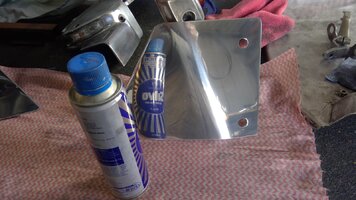 WIN_20220823_14_40_55_Pro.jpg264.1 KB · Views: 155
WIN_20220823_14_40_55_Pro.jpg264.1 KB · Views: 155 -
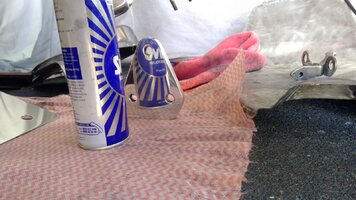 WIN_20220823_14_41_26_Pro.jpg267 KB · Views: 152
WIN_20220823_14_41_26_Pro.jpg267 KB · Views: 152 -
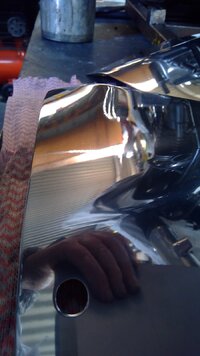 WIN_20220823_14_43_21_Pro.jpg161.6 KB · Views: 151
WIN_20220823_14_43_21_Pro.jpg161.6 KB · Views: 151 -
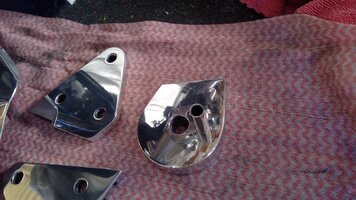 WIN_20220823_15_02_43_Pro.jpg334.2 KB · Views: 155
WIN_20220823_15_02_43_Pro.jpg334.2 KB · Views: 155 -
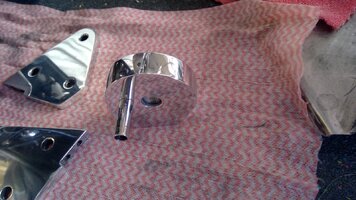 WIN_20220823_15_03_09_Pro.jpg280.9 KB · Views: 159
WIN_20220823_15_03_09_Pro.jpg280.9 KB · Views: 159



